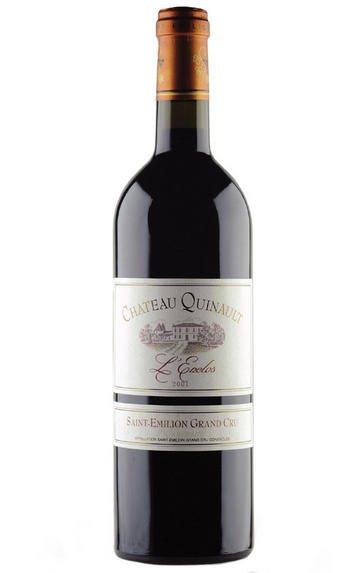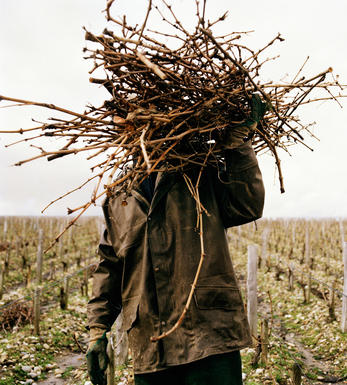
2010 Château Quinault l'Enclos, St Emilion, Bordeaux

Critics reviews
This old property was brought to life by Dr. Alain Raynaud and then sold to the owners of Cheval Blanc.
(91 Robert Parker - Wine Advocate - Feb 2013)
The 2010 sports a new label, since Quinault L’Enclos was purchased from Alain Raynaud and his wife by the owners of Cheval Blanc. Deep ruby/purple, with a little more muscle and power than most previous vintages have possessed, this wine displays notes of black raspberries, black currants, licorice, and some crushed rock. It is classically styled, with moderate tannin to shed, but don’t expect it to be long-lived, since most vintages of Quinault L’Enclos under Dr. Raynaud seemed to hit their peak very quickly, around age 7 to 10, and are probably best drunk in their first 15 years of life.
(90-92 Robert Parker - Wine Advocate - May 2011)
This old property was brought to life by Dr. Alain Raynaud and then sold to the owners of Cheval Blanc.
(91 Robert Parker - Wine Advocate - Feb 2013)
The 2010 sports a new label, since Quinault L’Enclos was purchased from Alain Raynaud and his wife by the owners of Cheval Blanc. Deep ruby/purple, with a little more muscle and power than most previous vintages have possessed, this wine displays notes of black raspberries, black currants, licorice, and some crushed rock. It is classically styled, with moderate tannin to shed, but don’t expect it to be long-lived, since most vintages of Quinault L’Enclos under Dr. Raynaud seemed to hit their peak very quickly, around age 7 to 10, and are probably best drunk in their first 15 years of life.
(90-92 Robert Parker - Wine Advocate - May 2011)
About this WINE

Chateau Quinault l'Enclos
Château Quinault l'Enclos is now unquestionably one of the star estates in St-Emilion. It is a St-Emilion Grand Cru property and is owned by Dr Alain Raynaud and his wife Françoise with cult oenologists, Michel Rolland and Denis Dubourdieu, acting as consultants. Quinault l'Enclos's spanking new cuverie and chai are located in the heart of the town of Libourne with the 18-hectare vineyard being very close to the Pomerol boundary.
The average age of the vines is high (60-70 years) and the wine is now a blend of 80% Merlot, 10% Cabernet Franc and 10% Cabernet Sauvignon. Quinault l'Enclos is matured in 100% new oak barrels for 18 months and is bottled unfined and unfiltered.

St Émilion
St Émilion is one of Bordeaux's largest producing appellations, producing more wine than Listrac, Moulis, St Estèphe, Pauillac, St Julien and Margaux put together. St Emilion has been producing wine for longer than the Médoc but its lack of accessibility to Bordeaux's port and market-restricted exports to mainland Europe meant the region initially did not enjoy the commercial success that funded the great châteaux of the Left Bank.
St Émilion itself is the prettiest of Bordeaux's wine towns, perched on top of the steep limestone slopes upon which many of the region's finest vineyards are situated. However, more than half of the appellation's vineyards lie on the plain between the town and the Dordogne River on sandy, alluvial soils with a sprinkling of gravel.
Further diversity is added by a small, complex gravel bed to the north-east of the region on the border with Pomerol. Atypically for St Émilion, this allows Cabernet Franc and, to a lesser extent, Cabernet Sauvignon to prosper and defines the personality of the great wines such as Ch. Cheval Blanc.
In the early 1990s there was an explosion of experimentation and evolution, leading to the rise of the garagistes, producers of deeply-concentrated wines made in very small quantities and offered at high prices. The appellation is also surrounded by four satellite appellations, Montagne, Lussac, Puisseguin and St. Georges, which enjoy a family similarity but not the complexity of the best wines.
St Émilion was first officially classified in 1954, and is the most meritocratic classification system in Bordeaux, as it is regularly amended. The most recent revision of the classification was in 2012

Cabernet Sauvignon Blend
Cabernet Sauvignon lends itself particularly well in blends with Merlot. This is actually the archetypal Bordeaux blend, though in different proportions in the sub-regions and sometimes topped up with Cabernet Franc, Malbec, and Petit Verdot.
In the Médoc and Graves the percentage of Cabernet Sauvignon in the blend can range from 95% (Mouton-Rothschild) to as low as 40%. It is particularly suited to the dry, warm, free- draining, gravel-rich soils and is responsible for the redolent cassis characteristics as well as the depth of colour, tannic structure and pronounced acidity of Médoc wines. However 100% Cabernet Sauvignon wines can be slightly hollow-tasting in the middle palate and Merlot with its generous, fleshy fruit flavours acts as a perfect foil by filling in this cavity.
In St-Emilion and Pomerol, the blends are Merlot dominated as Cabernet Sauvignon can struggle to ripen there - when it is included, it adds structure and body to the wine. Sassicaia is the most famous Bordeaux blend in Italy and has spawned many imitations, whereby the blend is now firmly established in the New World and particularly in California and Australia.


Buying options
Add to wishlist
Description
This property have turned out a finesse-styled 2010 with loads of blueberry and raspberry fruit as well as hints of pomegranate, crushed rock and damp earth. A blend of 70% Merlot, 20% Cabernet Franc and 10% Cabernet Sauvignon, it is medium-bodied and stylish, not a blockbuster by any means, but a wine of finesse to drink over the next 10-12 years.
This old property was brought to life by Dr. Alain Raynaud and then sold to the owners of Cheval Blanc.
(91 Robert Parker - Wine Advocate - Feb 2013)
The 2010 sports a new label, since Quinault L’Enclos was purchased from Alain Raynaud and his wife by the owners of Cheval Blanc. Deep ruby/purple, with a little more muscle and power than most previous vintages have possessed, this wine displays notes of black raspberries, black currants, licorice, and some crushed rock. It is classically styled, with moderate tannin to shed, but don’t expect it to be long-lived, since most vintages of Quinault L’Enclos under Dr. Raynaud seemed to hit their peak very quickly, around age 7 to 10, and are probably best drunk in their first 15 years of life.
(90-92 Robert Parker - Wine Advocate - May 2011)
wine at a glance
Delivery and quality guarantee